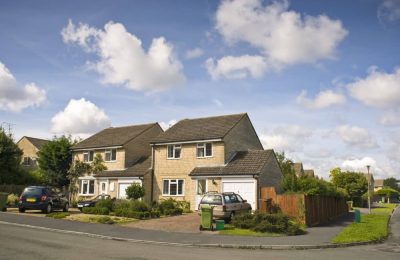For those with lower disposable incomes or who are saving up, houses of multiple occupancy (HMOs) have long been a desirable housing option. This mode of living is especially popular among students and young professionals since it offers cheaper rent per bedroom.
In the past, HMOs have been an appealing option for many investors due to higher and more reliable rental returns. However, with recent changes in legislation making it more difficult to maintain the necessary standards for an HMO property, is investing in one still something worth considering?
Today’s blog post examines the qualifications for HMO certification and what you can anticipate during your HMO mortgage application. With such knowledge, you’ll be able to evaluate the advantages and disadvantages of this particular property investment opportunity wisely.
What does the house in multiple occupation properties entail?
It is essential to research local authority HMO regulations as they can vary. This will enable you to establish what constitutes an HMO property and the standards that must be met by owners. Before delving into Scottish HMO licensing, this should be kept in mind.
In Scotland, an HMO is classified as a house or flat for three or more unrelated people living in separate households and sharing facilities such as bathrooms and kitchens. An HMO must serve as the main residence for the occupants, with owner-occupiers not counting towards the total number of qualifying persons.
What are the positives of investing in HMO properties in Scotland?
In terms of property investing, HMO flats and dwellings provide certain distinguishing advantages. To begin with, your rental yield is typically higher if you can let your property out as an HMO apartment rather than to a singular household. This is because you can charge a greater rent per room when letting out to multiple persons. Overseeing a small amount of HMO residences can also be less complicated than looking after a bigger number of smaller apartments.
Moreover, having multiple tenants for one property provides more stability to your rental income. If any of the tenants in the buy-to-let home can’t pay rent in a particular month, other renters will still be paying rent, thus ensuring that your losses do not exceed what they would have been if there had only been a single occupant.
What are the requirements for obtaining an HMO license in Scotland?
Investing in an HMO property has many rewards, however, the process of obtaining an HMO license is difficult, especially in Scotland where regulations have been put in place to protect tenants’ rights.
The spaces in your real estate have to be of sufficient size to meet their requirements. Scotland’s regulations stipulate that the area for an individual bedroom is at least 6.5 sq. metres and 10.5 sq. metres for a double room.
Furthermore, you must guarantee the safety of all gas and electrical appliances, install functioning fire alarms and self-closing fire doors, and conduct a risk assessment which should be examined by professionals or fire departments.
Your local authorities must verify that you and any property managers you work with are “fit and proper persons” in order for them to grant you an HMO license, as they do with all registered landlords. This will involve a background check to determine if you have been convicted of any crimes.
Obtaining an HMO license for your property can be a complicated process, so please consult this Scottish Government-compiled guide for more information about qualifying for one. Do keep in mind that running an HMO without the necessary license is illegal, with fines reaching up to £50,000.
Things to think about when applying for HMO mortgages
Locating a lender that sees HMOs as viable investments can be a challenge when investing in HMO flats and houses due to the higher perceived risk by lenders compared to traditional buy-to-let properties.
For this reason, it might be a better idea to use a specialist lender when looking for an HMO landlord. To find the optimal deal with private banks and niche lenders, a knowledgeable mortgage broker can be invaluable. A larger deposit could also give you an edge in the negotiation process.
When considering an HMO mortgage, prospective lenders typically prefer properties with an existing HMO licence, which is usually simpler than making a property and its amenities meet the HMO standards. It also takes a great deal of knowledge about local planning legalities.
For some lenders, applicants need to demonstrate six months to two years of successful property letting experience in order to be considered. This can make it hard for those without an existing portfolio of properties to invest in an HMO. In general, most lenders tend to favour granting mortgages for smaller HMOs, capping out at six bedrooms.
Is it worth investing in HMO properties?
When considering investing in an HMO property, several factors must be taken into account, such as the size of your initial deposit, your expertise in renting out flats and if you are located in a neighbourhood with a great demand for HMOs, good local amenities and convenient public transportation.
For HMO investment to be successful it is advisable to partner with a property investment manager who is able to help guide the process from start to finish. This includes offering financial guidance, finding quality properties that produce the highest returns and maintenance services including tenant management.













